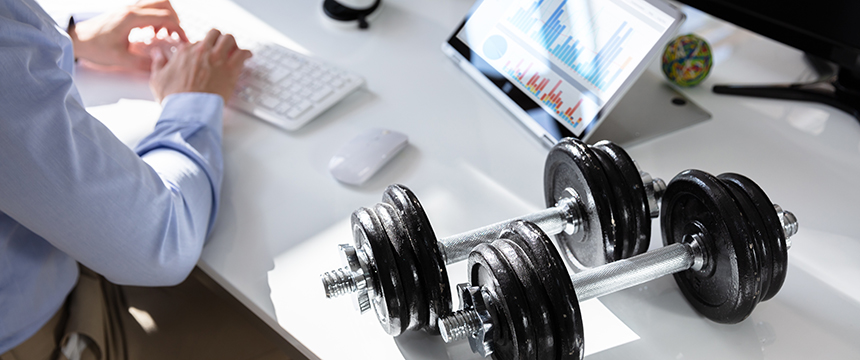
No, that’s not a typo in the word “hit;” rather, it’s a reference to “high intensity interval training” – a concept that I’ll discuss in more detail below. But first, let’s take a moment to acknowledge that the no-longer-new normal during this ongoing pandemic has created different, and for some, unprecedented, challenges to productivity and wellbeing. Maybe your productivity has taken a hit because you’re also doubling as your child’s third-grade teacher, or your wellbeing has been seriously impacted by sleeping, eating, working, and living within the same four walls day in and day out with no sense of separation. Whether it’s too many obligations, sheer monotony, or some other affliction, we need to continue to find ways to sustain ourselves through this.
And that’s where the concept of HIIT comes in. For the uninitiated, HIIT broadly refers to a type of workout involving short periods of intense exercise alternated with low-intensity recovery periods. In the last few years, this type of workout has been widely touted for its various health benefits (and not just by social media influencers who are also supposedly responding to “so many of you who asked” about where to purchase their trendy workout outfits). These benefits include efficiently utilizing the body’s energy and increasing the ability of endurance athletes to tolerate a high level of intensity for longer periods of time. For example, marathoners routinely add a form of HIIT, such as sprint training, to their overall training plans, to build their speed and endurance for long-distance runs. Before you get the wrong idea, I’m not suggesting that you incorporate physical HIIT routines (or over-priced workout wear) into your day to solve productivity or wellbeing challenges (although I’m a huge fan of HIIT and maybe it could help, especially since we’re not moving as much right now!). Rather, I’d invite you to intentionally apply the concept of HIIT to the way you work and to your mental fitness practices.
Lawyers are a unique brand of endurance athletes by trade (see my prior blog post comparing lawyers to elite athletes), as we’ve all heard a variation of the phrase, “your legal career is a marathon and not a sprint.” Adding some “interval training” to your work routines may help sustain your productivity, motivation, and wellbeing over the long-term. Several productivity techniques embrace the philosophy of working in an intense and focused manner for a period of time followed by a period of rest, such as the Pomodoro technique. These techniques are generally based upon the concept of ultradian rhythms (our internal rhythms occurring in increments shorter than 24 hours). Specifically, we have an ultradian rhythm related to activity and rest that occurs in 80-120 minute cycles during our waking hours. If we fully tap into this internal rhythm, we can experience an optimal period of uninterrupted activity of 90 minutes followed by 20 minutes of rest, give or take. If 80-100 minutes of focused time sounds daunting at first or isn’t realistic right now, you can apply HIIT in smaller doses by starting with shorter increments of focused time, such as 25-30 minutes, followed by 5-minute breaks (as fans of the Pomodoro technique can attest).
In coaching lawyers around productivity and wellbeing, together we look at habits of “powering through” for long sedentary periods and the tendency to ignore natural rhythms, as well as the thoughts driving these behaviors (“I can’t/won’t/don’t take a break because…”). We recognize how these habits, however well-intentioned, ironically undermine productivity and efficiency, contribute to feelings of burnout or exhaustion, and lower endurance to power through when it’s really necessary. We work together on understanding internal rhythms, structuring days to match natural energy levels with priorities, identifying obstacles and distractions, developing new habits or systems that make it easier to enact desired behavior, and designing refreshing breaks – examples have included playing musical instruments or online Scrabble. The magic word here is “play” – it’s important to design a break, no matter how short it is, that you look forward to and allows you to put down your mental load. Ticking through the rest of your to-do list, scrolling through social media, or watching the news are off limits during break time if those activities increase anxiety or drain your energy. Changing up what you do to recharge also can serve as an important disruption to the monotony of our oftentimes “routined-out” lifestyles over the last several months.
Finally, as we do in HIIT workouts, we need to give our sympathetic nervous systems (our fight-or-flight response) a break and time to rest-and-digest by activating our parasympathetic nervous systems. While your stress response may be chronically triggered due to the nature of the legal profession, it’s likely gone into overdrive with a global pandemic thrown on top. Partaking in low-intensity recovery periods on a consistent basis – daily, weekly, monthly, and annually – will allow you to efficiently use your limited time and your body’s finite energy for you instead of against you.
